Welding is a skill that has been used for centuries to join two pieces of metal together. It is an essential skill in the construction and repair of many products and structures. But what happens when you need to join two different types of metal together?
Dissimilar material welding can be a tricky process, but it can be done with the right knowledge and techniques.
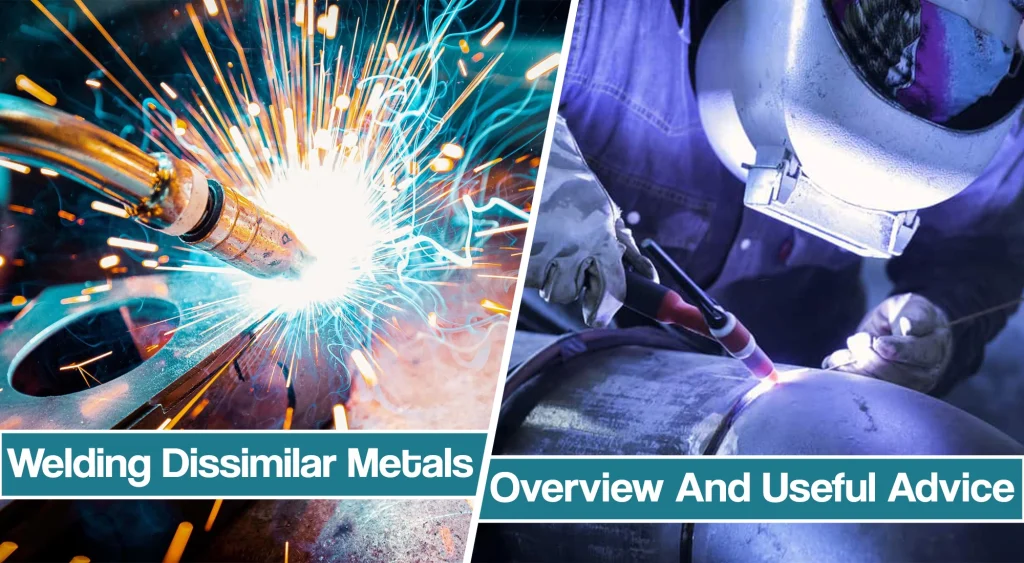
In this article, we will explore the basics of welding dissimilar metals and provide tips and tricks to help you get the job done right Whether you are a beginner or an experienced welder, you will find valuable information in this article. So, let’s get started and learn how to weld dissimilar metals.
Can You Weld Dissimilar Metals?
Yes, you can weld dissimilar metals, although it is more difficult than welding similar metals. The amount of experience needed to weld dissimilar metals depends on the type of metals being welded and the welding process being used.
Generally, an experienced welder with a good understanding of welding processes and the properties of the metals being welded should be able to weld dissimilar metals.
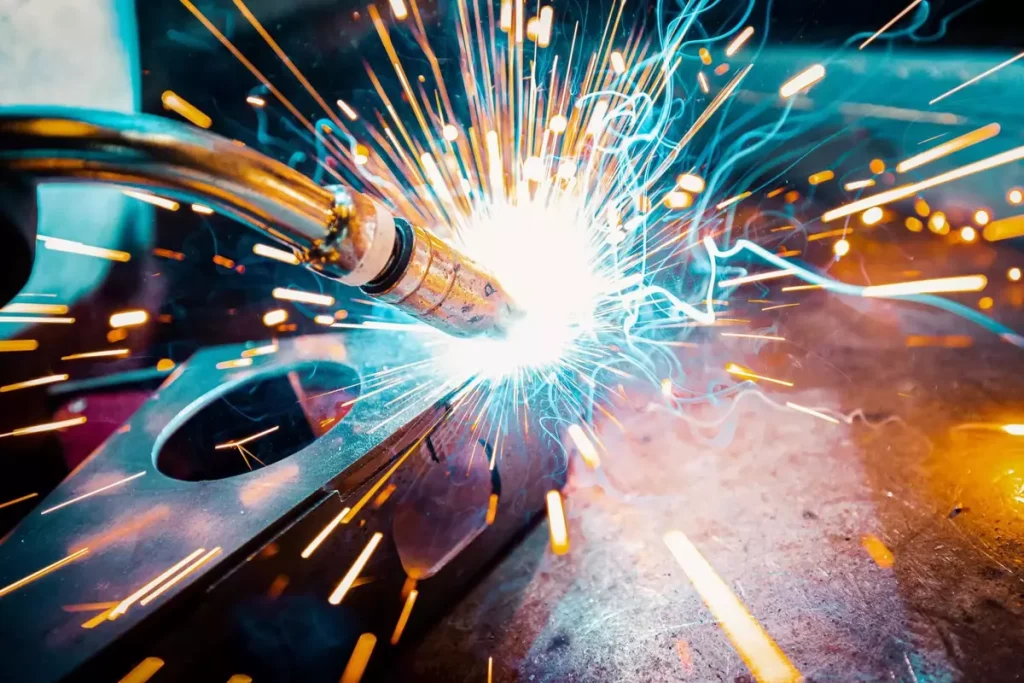
Meanwhile, welding dissimilar metals can be a challenging task for those new to welding or hobby welders. Potential issues that could make dissimilar metal welding challenging include cracking, porosity, and warping. Cracking can occur due to thermal stresses created during the welding process. Porosity can occur due to the different melting points of the metals, as well as the different expansion and contraction rates of the metals.
Warping can occur due to the different expansion and contraction rates of the metals. Additionally, there is a risk of contamination from the different metals, which can reduce the strength of the weld.
What Do You Need To Know Before Welding Dissimilar Metals?
Before you decide to weld dissimilar metals, there are a couple of things you should consider. These concern:
- Metals’ Properties: It is important to understand the properties of both metals that are to be welded together. Different metals have different properties such as melting point, thermal conductivity, and electrical conductivity. Knowing the properties of both metals can help determine the best welding technique and materials to use.
- Welding Process: Different welding processes work differently with specific metals, so you will need a basic knowledge and understanding of each welding method.
- Heat Input: Different metals require different amounts of heat input for welding. It is important to determine the optimal amount of heat input for the metals being welded together.
- Pre-Weld Cleaning: Pre-weld cleaning is important to ensure a strong weld joint
- Post-Weld Cleaning: Post-weld cleaning is important to remove any contaminants that may have been introduced during the welding process.
Understanding Metal Properties
Understanding and matching the mechanical properties, physical characteristics, and corrosion resistance of both metals and filler metal is essential in dissimilar materials welding because it ensures that the welded joint is strong and reliable.
If the metal properties, physical characteristics, and corrosion resistance of both metals and filler metal are not matched, the welded joint may be weak and prone to failure.

The strength of the weld is determined by the strength of the base metals, the filler metal, and the welding technique. When welding two metals with different strengths, the overall strength of the weld will be determined by the weaker of the two metals. This is because the weld will have to be able to withstand the stresses of both metals, and the weaker metal will be the limiting factor.
The melting point of two metals can have a significant impact on the overall strength of the weld. If the melting points of the two metals are too far apart, the welded joint may not be strong enough to withstand the stresses of the application. This is because the different melting points of the two metals can cause the weld to cool at different rates, resulting in a weak, brittle joint. Additionally, if the melting point of the filler metal is too low, it may not be able to fill the gap between the two metals, resulting in an incomplete weld.
Different coefficients of thermal expansion of two metals can impact the overall strength of the weld because the metals will expand and contract at different rates when exposed to heat. This can cause the welded joint to become weak and prone to failure. The expansion and contraction of the metals can cause the welded joint to crack or break due to the different rates of expansion and contraction. The welded joint may also become distorted.
Dissimilar Metal Welding Methods
Dissimilar welding can be successfully done with one of the fusion welding methods, non-fusion welding or low-dilution welds.
Fusion welds include the most common arc welding methods you use for everyday projects, such as Gas Metal Arc Welding (Metal Inert Gas), Gas Tungsten Arc Welding (Tungsten Inert Gas), Stick welding, Submerged Arc Welding (SAW), Flux core welding (FCAW).
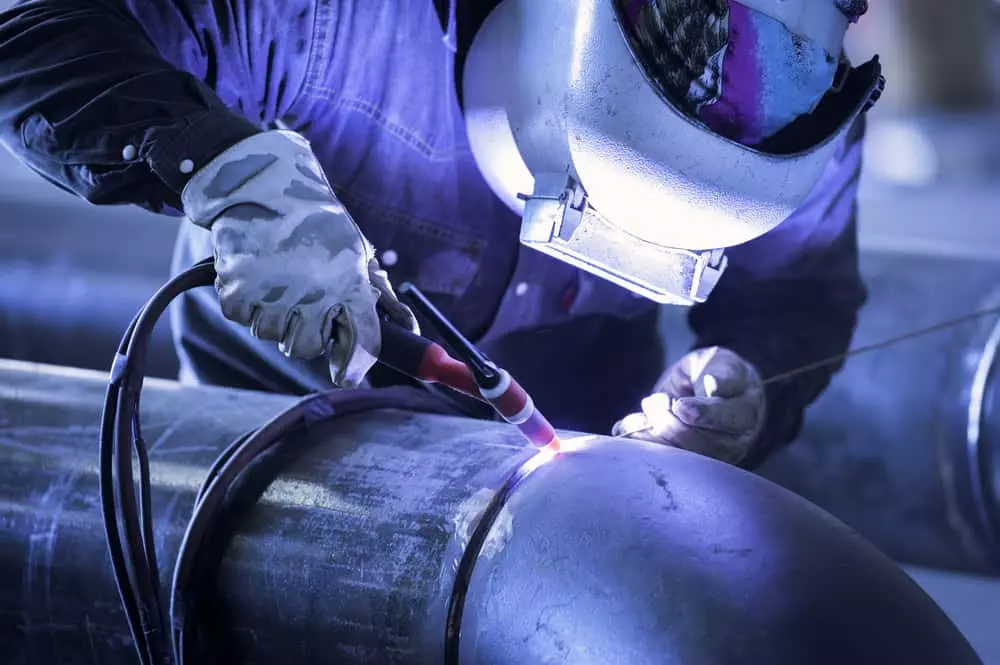
Common choices for dissimilar metals are MIG or TIG welding processes. The MIG welding process is more straightforward, but with TIG, you can control the filler metal deposition perfectly, which is crucial in dissimilar metal welding.
Low-dilution methods include the electron beam welding process, laser welding, and pulsed arc welding. These are commonly used in specific industrial applications to join delicate and thin dissimilar metals with no added filler metal.
Non-fusion welding includes friction welding, explosion welding, diffusion welding along with brazing and soldering. Non-fusion and low-dilution methods are commonly used in heavy production and specific industrial applications. On the other hand, you will be more than fine with fusion welding in your everyday DIY, home shop, or repair welding projects.
Which Dissimilar Metals Cannot Be Welded Together?
Unfortunately, due to metallurgical properties, not every piece of base materials can be welded together. Here are some common examples:
- Aluminum and steel cannot be welded by conventional welding methods because they have different melting points. Steel has a higher melting point than aluminum, so when they are heated up during the welding, the aluminum will melt before the steel reaches its welding temperature, resulting in a weak weld joint.
- Copper and carbon steel cannot be welded together due to their disparate properties. Carbon steel is much harder than copper, and when heated up during the welding, it can cause cracks in copper and lead to an ineffective weld joint.
- Cast iron and stainless steel cannot be welded together because of their dissimilar physical characteristics and chemical compositions. Cast iron is more brittle than stainless steel, and when exposed to high temperatures during the welding process it can cause cracking in both materials leading to weak or non-existent weld joints.
- Magnesium and titanium cannot be welded together because of their disparate melting points. Titanium has a much higher melting point than magnesium, so when they are heated up during the welding process, the magnesium will melt before the titanium reaches its welding temperature, resulting in a weak weld joint or no joint at all.
- Brass and zinc cannot be effectively joined by welding due to their dissimilar chemical compositions, which react adversely with each other during heating for welding purposes resulting in an ineffective or non-existent joint strength between them both metals.
- Lead and aluminum cannot be joined by welding due to their dissimilar properties, which lead them to behave differently when subjected to heat for welding purposes resulting in an ineffective or non-existent joint strength between them both metals
Welding Mild Steel To Stainless Steel
Welding mild steel to stainless steel can be a tricky process. The potential issues you may face are galvanic corrosion, thermal expansion, and cracking. Galvanic corrosion occurs when two dissimilar metals are joined together and exposed to an electrolyte.
Thermal expansion occurs when two different metals are joined together and heated, causing them to expand at different rates. This can cause cracking or warping of the welded joint.
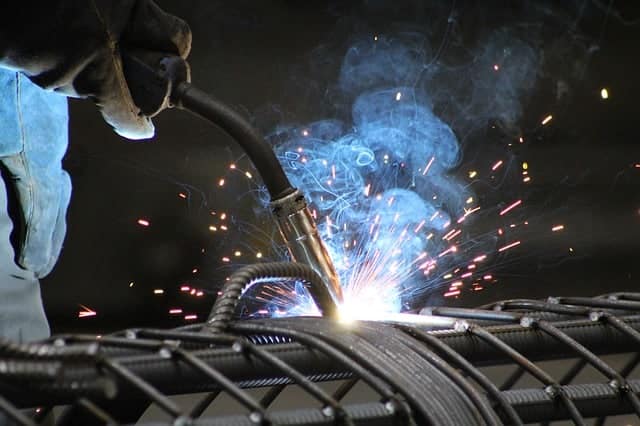
To successfully weld mild steel to stainless steel, you will need to use a shielding gas, such as argon, to prevent oxidation. You will also need to use a filler metal that is compatible with both metals, such as 309L or 316L stainless steel. You will also need to use a high-heat welding process, such as TIG welding, to ensure that the weld is strong and free from defects. Finally, you will need to make sure that the weld joint is properly prepared, cleaned, and polished to prevent corrosion.
Weld Preparation
Weld preparation and cleaning are important steps in ensuring a good weld when welding mild steel to stainless steel. Before welding, it is important to remove any rust, dirt, oil, or other contaminants from the surface of the metal and welded joints. This can be done by grinding, sanding, or using a wire brush.
Preheating is not always necessary when welding mild steel to stainless steel, but it can be beneficial in certain cases. Preheating helps reduce the thermal shock that can occur when welding two different metals together. It also helps reduce the risk of cracking and warping. Preheating should be done slowly and evenly to ensure that the entire area is heated to the same temperature.
Filler Metal Selection
Filler metal selection for welding steel to stainless steel depends on several factors, including the type of stainless steel being welded, the base metal, the joint design, and the welding process. In general, the most common filler metal choice for welding steel to stainless steel is an austenitic stainless steel with a matching composition.
For temperatures below 800°F, a 308L or 309L stainless steel filler metal should be used. For temperatures above 800°F, a 312L stainless steel filler metal should be used. It is important to note that the filler metal should match the composition of the stainless steel being welded.
These have a high level of corrosion resistance and are suitable for welding steel to stainless steel. The 308L and 309L stainless steel filler metals are designed for use at temperatures below 800°F, while the 312L stainless steel filler metal is designed for use at temperatures above 800°F.
How To Deal With Thermal Expansion Differences
When welding steel to stainless steel, it is important to take measures to reduce the thermal expansion differences between the two materials. Preheating the steel can help to reduce the amount of thermal stress created when welding the two materials together. Additionally, using a filler material with similar thermal expansion properties, a low heat input welding process, and a joint gap larger than normal can all help to reduce the amount of thermal stress created.
Furthermore, it is important to ensure that the weld joint is designed to accommodate the different thermal expansion rates of the two metals. Finally, post-weld heat treatment can be used to reduce the amount of residual stress created when welding two different metals together. This can be done by heating the weldment to a temperature below the critical temperature of the stainless steel and then cooling it slowly.
Welding Aluminum To Different metals
Welding aluminum to steel is a process that requires a great deal of skill and knowledge. It is a process that is used in many industries, such as automotive, aerospace, and construction and is often used to join two dissimilar metals. The process of welding aluminum to steel requires a great deal of preparation and understanding of the materials being joined.
When welding aluminum to steel, it is important to recognize the main concerns associated with the process. The two metals have different melting points, and aluminum will melt at a much lower temperature than steel.
This means that the steel will be exposed to higher temperatures than it is designed to withstand, and this can lead to warping and distortion. Additionally, aluminum and steel will expand and contract at different rates when exposed to heat, which can cause cracking and other issues.
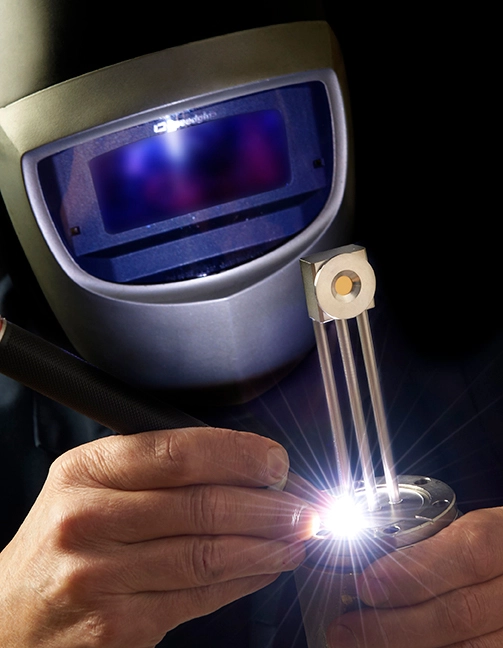
In order to successfully weld aluminum to steel, it is important to prepare the materials properly. The steel should be cleaned and degreased to ensure that there is no oil or dirt on the surface. Additionally, the steel should be preheated to a temperature of approximately 400°F (204°C). This will help to reduce the risk of warping and distortion. The aluminum should also be preheated to approximately 400°F (204°C) to reduce the risk of cracking.
Welding aluminum to steel with MIG or TIG welding will require aluminum-steel transition materials or third metal. These will have the same properties as aluminum or steel, and you can simply weld them to the required base metals. The filler metal should be designed specifically for welding aluminum to steel and should have a melting point that is lower than steel but higher than aluminum. This will help to ensure that the weld is strong and will not crack.
In addition, there are alternatives such as nonstandard welding methods, friction welding, explosive welding, or laser welding. These all offer solutions to main issues such as wrapping and distortion. Additionally, welders can apply a protective coating that simulates the properties of both metals.
Welding Copper To Different Metals
When welding copper to other metals, it is important first to consider the properties of each material. Copper has a relatively low melting point compared to other metals, such as steel or aluminum.
This means that when welding copper with higher melting point materials such as steel or aluminum, special precautions must be taken in order to prevent overheating and warping of the material. Additionally, since copper has a high thermal conductivity, it can dissipate heat quickly, which can result in poor weld penetration if not properly managed.
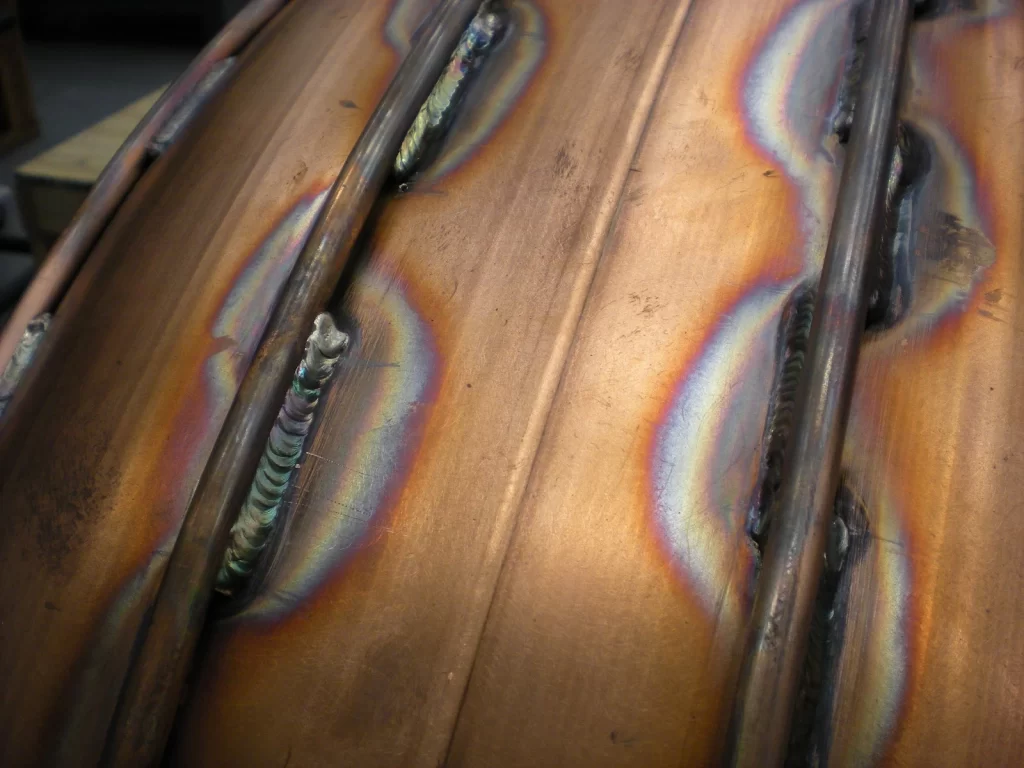
Using a high-copper-alloy filler rod, you can weld thin copper to steel with a TIG welder However, due to their high levels of manganese and phosphorus can lead to cracking in the weld joint over time, so you need to be cautious.
Preheating helps reduce thermal shock on both sides of the weld joint, while post-heating helps reduce residual stresses caused by rapid cooling after welding has been completed. Preheating temperatures should range from 250°F (121°C) up to 500°F (260°C), depending on the thicknesses involved; post-heating temperatures should range from 400°F (204°C) up to 600°F (316°C).
Welding Nickel-based Alloys to Steel
When welding nickel-based alloys to steel, it is important to consider the different thermal expansion rates of the two metals. Steel expands more quickly than nickel-based alloys when heated, which can lead to cracking and other defects in the weld joint if not taken into account.
It is also important to use a filler metal that has similar properties as both metals being joined together.
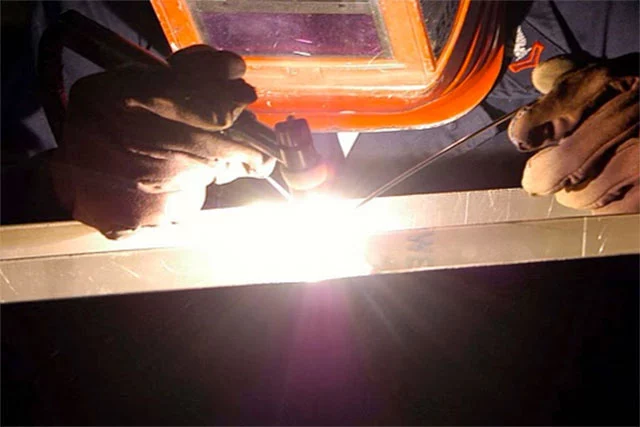
Nickel-based filler metals such as Inconel 625 or Monel 825 are often used for this purpose due to their high corrosion resistance and excellent weldability with both steels and nickel-based alloys.
Argon/CO2 mixtures are often used for this purpose due to their ability to provide good arc stability while also protecting against oxidation during welding processes involving high temperatures.
Welding low-carbon steel to high-strength steel
When welding low-alloy steel to high-strength steel, the main concern is ensuring that the weld strength is sufficient for the application. The weld joint must be designed to provide adequate strength and ductility for the intended purpose.
Filler metals for this type of welding are typically selected based on their tensile strength, yield strength, impact toughness, and hardness.
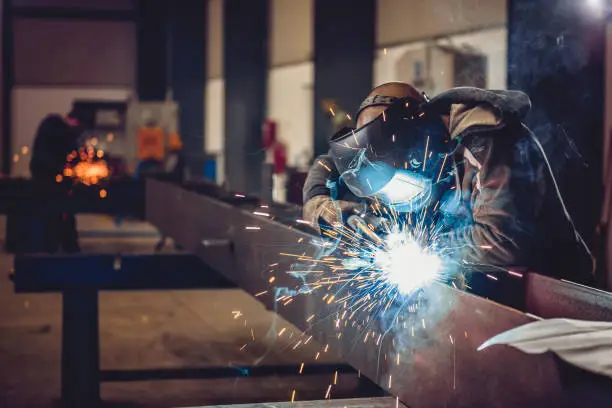
Generally speaking, it is best to use a filler metal that has a tensile strength at least equal to or greater than that of the lower-strength base material being joined. In addition, it should have an elongation value of at least 20% in order to ensure adequate ductility in the finished weldment.
Since preheat and interpass temperatures play a more crucial role in higher-strength metal, you will have to control them with A514 steel. That way, you prevent cracking and loss of strength when welding different-strength steels.
Conclusion
Dissimilar welding refers to joining two different metal alloys. Many ask can dissimilar metals be welders, and yes, it is a challenging task. But with the right information and techniques, it can be done successfully. It is important to understand the different types of metals you are working with and their properties, as well as the best welding techniques for each type.
With proper preparation and practice, anyone can learn how to weld dissimilar metals safely and effectively with high-quality of finished weld. By following the guidelines outlined in this article, you will be able to join different types of metals together securely and efficiently.
Resources:
- https://esab.com/us/nam_en/esab-university/blogs/welding-dissimilar-metals-using-309-stainless-steel/
- https://www.twi-global.com/technical-knowledge/faqs/faq-what-are-the-residual-stresses-in-a-dissimilar-metal-weld
- https://www.hobartbrothers.com/resources/technical-articles/welding-dissimilar-metals-2/
- https://www.totalmateria.com/page.aspx?ID=CheckArticle&site=ktn&NM=152
- https://www.assda.asn.au/images/PDFs/FAQs/FAQ9.pdf





